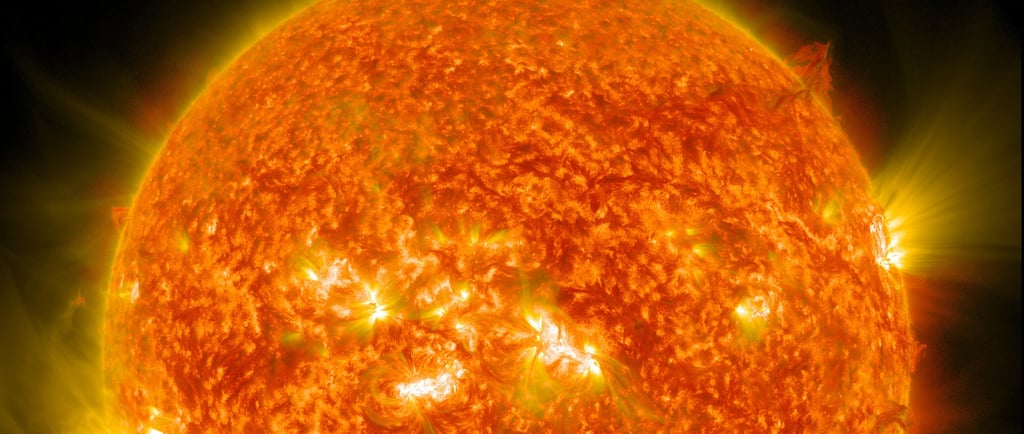Do You Know Why the Sun Is So Hot
#DoYouKnow, #SunFacts, #NuclearFusion, #SpaceScience, #SolarEnergy, #Astronomy, #SpaceEducation, #ScienceFacts
TECH & SCIENCE
7/20/20252 min read


Do you know why the Sun is so incredibly hot, and why its heat and light are essential for life on Earth? The Sun is not just a bright object in our sky; it’s a massive, glowing ball of plasma powered by the incredible energy of nuclear fusion. Without the Sun, our planet would be a frozen, lifeless rock drifting through space. In this article, we’ll dive deep into how the Sun produces heat, why it’s so powerful, and what it means for life on Earth.
1. The Birth of the Sun
The Sun was born about 4.6 billion years ago from a giant cloud of gas and dust, called a solar nebula. This cloud collapsed under its own gravity, creating a spinning disk of material. At the center, the material compressed and heated up until the temperature and pressure were high enough to ignite nuclear fusion. That’s when the Sun became a star.
2. Why Is the Sun So Hot?
The Sun’s heat comes from nuclear fusion, a process where hydrogen atoms combine to form helium in the Sun’s core. During fusion:
The Sun’s core reaches temperatures of around 15 million °C (27 million °F).
Each second, about 4 million tons of matter are converted into pure energy.
This energy travels from the Sun’s core to the surface, and then as light and heat to Earth.
3. Layers of the Sun and Heat Transfer
The Sun is made up of several layers, each playing a role in the transfer of energy:
Core: Where nuclear fusion happens.
Radiative Zone: Energy slowly moves outwards, taking thousands of years to escape.
Convective Zone: Energy moves in the form of convection currents, like boiling water.
Photosphere: The visible surface, with a temperature of about 5,500°C.
Corona: The outermost layer, reaching over 1 million °C, visible during solar eclipses.
4. How the Sun’s Heat Affects Earth
The Sun’s heat and light are essential for:
Photosynthesis: Plants use sunlight to make food.
Climate and Weather: Sunlight drives wind patterns, rain, and ocean currents.
Life on Earth: Without the Sun’s warmth, Earth would freeze within days.
5. Fun Facts About the Sun
The Sun contains 99.8% of the mass of the entire solar system.
Light from the Sun takes about 8 minutes and 20 seconds to reach Earth.
The Sun will continue burning for another 5 billion years before becoming a red giant.
6. The Future of the Sun
Eventually, the Sun will run out of hydrogen fuel. When this happens, it will expand into a red giant, swallowing Mercury and Venus, and possibly Earth. After that, it will shrink into a white dwarf, cooling slowly over billions of years.
Conclusion
Do you know that the sunlight we see today started its journey inside the Sun’s core over 100,000 years ago before reaching the surface? The Sun’s incredible heat and energy make life possible on our planet, and studying it helps us understand not only our own solar system but also the billions of stars that light up the universe.
Knowledge
Empowering minds with reliable educational content daily.
Newsletter Signup
© 2025 DoYouKnow. All rights reserved.
Stay Ahead of the Trends – Join Our Newsletter
